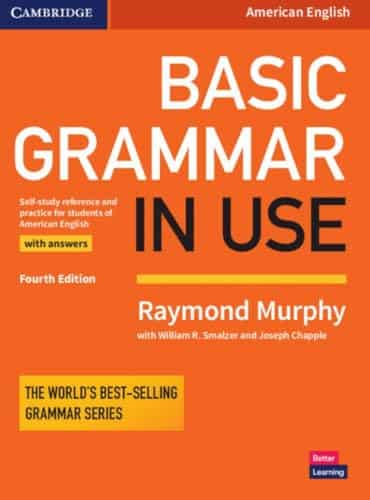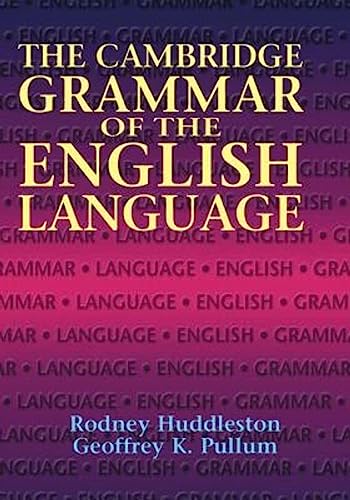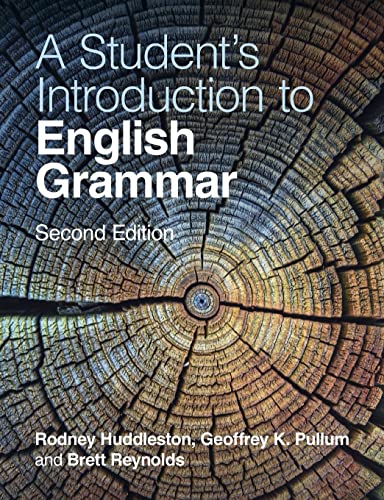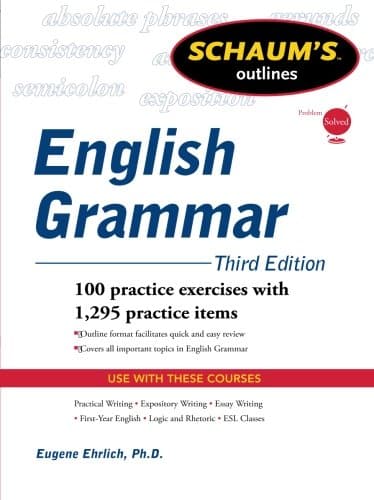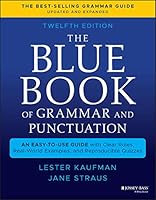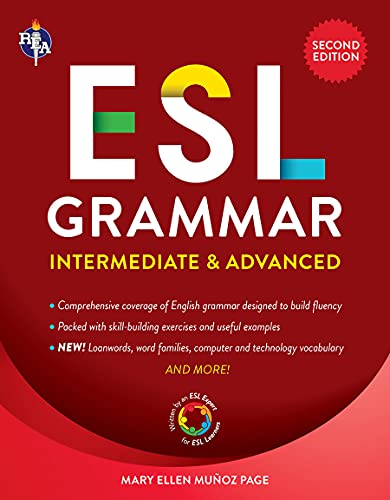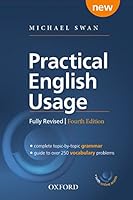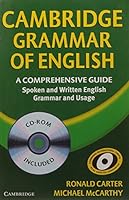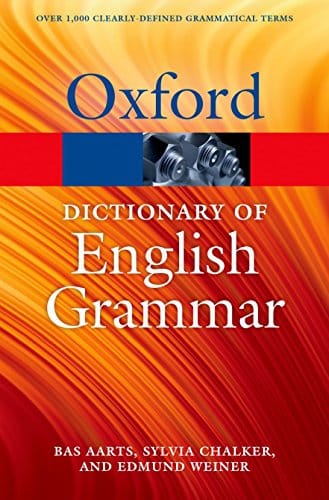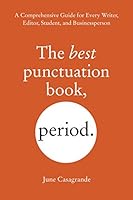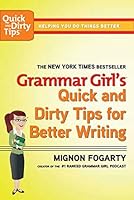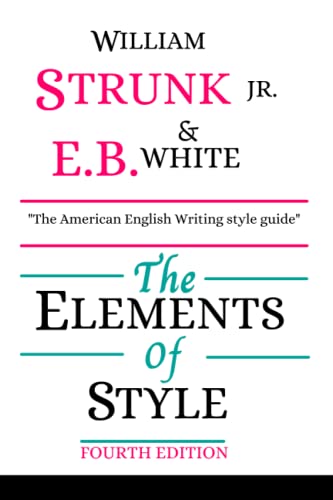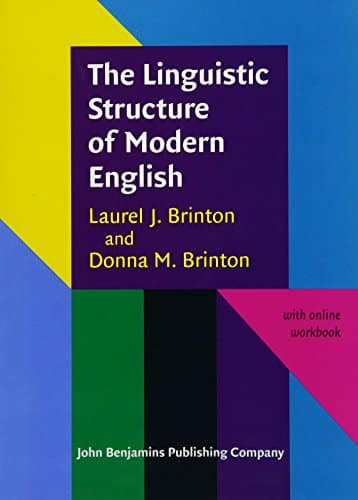Contents
- 1. Best Overall: The “Grammar in Use” Series
- 2. Most Comprehensive Reference: “The Cambridge Grammar of the English Language”
- 3. Best for Learning Grammar Basics: “A Student’s Introduction to English Grammar”
- 4. Most Straightforward English Grammar Book: “Schaum’s Outline of English Grammar”
- 5. Best for Simple Yet In-depth Explanations: “The Blue Book of Grammar and Punctuation”
- 6. Best Supplementary Material for Intermediate and Advanced ESL Students: “ESL Grammar: Intermediate & Advanced”
- 7. Best for Structured Grammar Practice: “Focus on Grammar”
- 8. Best for Real-life Grammar: “Practical English Usage”
- 9. Best for Spoken Grammar: “Cambridge Grammar of English”
- 10. Best Grammar Dictionary: “The Oxford Dictionary of English Grammar”
- 11. Best for Learning Punctuation: “The Best Punctuation Book, Period”
- 12. Most Fun Grammar Book: “Grammar Girl’s Quick and Dirty Tips for Better Writing”
- 13. Best for Aspiring Writers: “The Elements of Style”
- 14. Best for Advanced Learners: “The Linguistic Structure of Modern English”
- How to Study with English Grammar Books
- And One More Thing...
14 Best English Grammar Books [2025 Edition]

English grammar books are full of information on punctuation, capitalization, sentence structure, word usage and so much more. You’ll find plenty that say they are the “best English grammar book” online, but only a handful actually are.
But don’t worry. Whether you’re aiming to pass an English proficiency exam, or you just want to be better understood by your English-speaking friends, we’ve got you covered with these 14 English grammar books to hone your writing and speaking skills to perfection.
Download: This blog post is available as a convenient and portable PDF that you can take anywhere. Click here to get a copy. (Download)
1. Best Overall: The “Grammar in Use” Series
Summary: All of the “Grammar in Use” books are able to balance being a reference material and workbook rolled into one.
Search online for the best English grammar book, and there’s a good chance you’ll find someone recommending an entry from the “Grammar in Use” series by Raymond Murphy.
Every book from the series (including the ones for intermediate and advanced students) covers 100 units. Each unit focuses on a specific grammar topic and comes with exercises. Once you’re done with the exercises, you can check them against the answer keys at the back of the book. This makes it easy to use as a self-study guide and as a supplement to your classroom studies.
If you’re at the A1-B1 level and you want more material to work with, you can also purchase Murphy’s “Essential Grammar” books here and here.
The “Grammar in Use” books aren’t the most comprehensive English grammar books (that would be our next entry). But if you’re looking for materials that you can study on your own, use as a supplement to your classroom studies and/or build a strong foundation in the English language, there aren’t a lot of books that can beat Murphy’s works.
2. Most Comprehensive Reference: “The Cambridge Grammar of the English Language”
Summary: If you want to really get into the nitty-gritty of the English language, you’ll benefit the most from this comprehensive (though not necessarily ESL-friendly) book.
At a hefty 1,800+ pages, “The Cambridge Grammar of the English Language” is a comprehensive grammar reference book that you should always keep within your reach. It covers all the key grammar topics in detail, and is great for understanding the patterns and structures of the English language.
However, this book doesn’t have any exercises, so it works best as a reference material. For instance, if you get stuck on another grammar resource or need a better explanation, you can look up the topic in this book.
Note that it’s not specifically targeted at students learning English as a second language. As such, you may want to keep a dictionary on hand as you comb through this book.
3. Best for Learning Grammar Basics: “A Student’s Introduction to English Grammar”
Summary: “A Student’s Introduction to English Grammar” is a more condensed version of “The Cambridge Grammar of the English Language” aimed at undergraduate-level students.
If “The Cambridge Grammar of the English Language” feels a bit too advanced for you at the moment, but you still want something that’s just as comprehensive yet more accessible, you can get the cheaper and thinner “A Student’s Introduction to English Grammar.”
While it’s not for complete beginners to English, it does provide a solid foundation for grammar. You may find it especially useful if you’re a college or university student who’s not majoring in English, but are still interested in the technical aspects of the language.
Unlike “The Cambridge Grammar of the English Language,” this one has plenty of exercises, as well as links to online resources you can check out to supplement your studies.
4. Most Straightforward English Grammar Book: “Schaum’s Outline of English Grammar”
Summary: “Schaum’s Outline of English Grammar” contains bare-bones (simple and straightforward) discussions of the most essential English grammar concepts, accompanied by several examples and exercises.
If you like to memorize rules and terminology, “Schaum’s Outline of English Grammar” is for you. The material is presented in a straightforward way with definitions, explanations and practice exercises.
There are no illustrations or out-of-the-box activities to help you learn the grammar concepts, however. So, if you’re looking for a textbook with a less traditional approach to teaching concepts, this might not be for you.
With that said, “Schaum’s Outline of English Grammar” can take any dedicated student from intermediate to advanced, provided you stick to the book’s structured learning program. It even works well for aspiring writers!
5. Best for Simple Yet In-depth Explanations: “The Blue Book of Grammar and Punctuation”
Summary: “The Blue Book of Grammar and Punctuation” is a concise grammar book that goes into a bit more detail than similar reference materials.
“The Blue Book of Grammar and Punctuation” breaks down the rules of English grammar with short explanations. It’s like a slightly more in-depth version of “Schaum’s Outline of English Grammar.”
The book has plenty of real-world examples, emphasizing common questions like the difference between “your” and “you’re.” There are quizzes for every chapter at the end of the book. Aside from grammar, it also covers punctuation and capitalization rules, which can seem pretty confusing in English.
You can check out their website to get a feel for the book’s style, or try their free grammar quizzes.
6. Best Supplementary Material for Intermediate and Advanced ESL Students: “ESL Grammar: Intermediate & Advanced”
Summary: This book, which is aimed at ESL learners, explains intermediate and advanced English concepts in a simple and straightforward way, complete with exercises to reinforce what you’ve learned.
Tired of learning English from books that don’t understand the unique challenges ESL learners face? Then this book might be for you. It’s written by a bilingual author who knows what it’s like to learn a second language and explains the content in a way that’s perfect for ESL students.
The book is filled with test-taking strategies to help students prepare for the TOEFL exam. It also covers the basics of topics like articles, prepositions and verb structures.
The book even comes with its own glossary (a simplified dictionary that only contains words/phrases and their meanings). This way, you don’t have to worry about not having a dictionary every time you use this book to study.
Since it’s aimed at ESL students, however, some of the topics may not be as thoroughly explained as you might like. In that case, you may want to refer to other resources instead.
7. Best for Structured Grammar Practice: “Focus on Grammar”
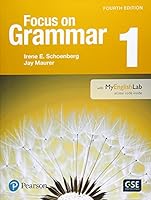
“Focus on Grammar” is a series of grammar books broken up into the following proficiency levels, from beginner to advanced:
The “Focus on Grammar” workbooks are designed for those who benefit from structure and organization. If you’re someone who prefers explanations over context and wants to know the ins and outs of each grammatical rule covered, this is the perfect book is for you.
The books are designed for classroom use as well as self-study, so you can benefit from this versatile workbook that covers definitions, forms and practical grammar knowledge.
Also, there’s a good chance your ESL teacher is using a “Focus on Grammar” book. If that’s the case, don’t hesitate to ask them for tips on how to use this one when you’re studying!
8. Best for Real-life Grammar: “Practical English Usage”
Summary: True to its name, “Practical English Usage” emphasizes the use of English grammar in practical, authentic contexts.
“Practical English Usage” is a well-known grammar book that’s already on its fourth edition. Geared toward intermediate and advanced learners, it covers more than 600 grammar points that are often tricky, such as the difference between “bring” and “take” and how to use different articles.
Most notably, it tackles the problem of usage. For example, you might know how to form the present perfect tense, but when exactly do you use it?
Beyond this, the second part of the book talks about common issues with vocabulary. You’ll also find extra information on topics like polite or offensive language and how to write business emails in English.
9. Best for Spoken Grammar: “Cambridge Grammar of English”
Summary: Aside from covering English grammar points in detail, the “Cambridge Grammar of English” also has a CD packed with audio recordings of the lessons.
At almost 1,000 pages, “Cambridge Grammar of English” is one of the thickest grammar books on this list. Even though it dives deep into major English grammar topics, it’s pretty user-friendly. It’s written in clear language, and each grammar concept comes with lots of example sentences that you’ll actually hear in everyday life.
It also comes with a CD-ROM, which makes it much easier and faster to find what you’re looking for in the book. You can also listen to every example being read aloud, too!
10. Best Grammar Dictionary: “The Oxford Dictionary of English Grammar”
Summary: If you’re simply looking for definitions of English grammar terms and nothing else, there are few better resources than “The Oxford Dictionary of English Grammar.”
Have you ever wondered what terms like “appositive” or “gerund” meant? Chances are, you’ll find the answer within the pages of “The Oxford Dictionary of English Grammar.” It’s a grammar reference book that focuses on defining grammar terms instead of explaining grammar rules.
This dictionary has more than 1,600 entries from A to Z. Some entries have examples you’ll regularly encounter in real-world English, making this a bit more practical than your usual garden-variety (ordinary) dictionary.
11. Best for Learning Punctuation: “The Best Punctuation Book, Period”
Summary: If punctuation is your Achilles’ heel (weakest point), keep this aptly-named book handy.
Grammar isn’t just about the words—you also need to account for punctuation! While some books might only have a small chapter (or section) on punctuation, “The Best Punctuation Book, Period” is a helpful reference that discusses each type of punctuation in the English language, including Oxford commas and apostrophes.
Although it’s not a full grammar reference book, it’s an excellent resource for learning punctuation rules. You’ll learn exactly how to use each punctuation mark in different situations.
If you’re looking for a funnier (albeit less beginner-friendly) alternative, there’s also “Eats, Shoots & Leaves” by Lynne Truss. This one is peppered with authentic examples, complete with commentaries from the author that will make you laugh out loud.
12. Most Fun Grammar Book: “Grammar Girl’s Quick and Dirty Tips for Better Writing”
Summary: “Grammar Girl’s Quick and Dirty Tips for Better Writing” is perfect for you if you find most grammar books too dry and boring to get through.
Looking for a grammar book that’s fun and witty rather than overly academic? “Grammar Girl’s Quick and Dirty Tips for Better Writing” might not have as much information as other reference books, but it’s written in a friendlier and more conversational style.
The author is also the owner of the award-winning “Grammar Girl” podcast, which teaches English grammar to help you improve your writing skills. It was so popular that it’s been downloaded over 20 million times to date, and is a five-time winner of the Best Education Podcast in the Podcast Awards.
13. Best for Aspiring Writers: “The Elements of Style”
Summary: “The Elements of Style” by Strunk and White is a classic book that mostly focuses on how to write better in American English, but also has some great grammar pointers.
Are you dreaming of becoming a writer in the English language? Then you should definitely have this book on your to-read list. In fact, many native English writers have it!
While it’s more geared toward writers than learners of English grammar, there are some valuable grammar tips at the beginning of the book. As you progress, you’ll also come across pointers that can help improve your writing in general, such as “Avoid fancy words” and “Use orthodox (standard) spelling.”
Because of its intended readership, however, “The Elements of Style” is best suited for those who are already in the advanced stages of learning English.
14. Best for Advanced Learners: “The Linguistic Structure of Modern English”
Summary: “The Linguistic Structure of Modern English” is one of the best (if not the best) resources for advanced learners interested in the technicalities of the English language.
Speaking of advanced learners, you can’t get any more high-level than this one. If you thought “The Cambridge Grammar of the English Language” was detailed, wait until you open the pages of “The Linguistic Structure of Modern English.”
The book is aimed at linguists, or people who study languages. As such, you should expect a lot of terminology and in-depth analysis of specific grammatical concepts like syntax, phonology, etc.
I definitely wouldn’t recommend this one to beginners or even intermediate learners. But if you have a considerable amount of intellectual curiosity and are relatively comfortable with your command of the English language, reading this book might prove to be a treat.
How to Study with English Grammar Books
Regardless of which English grammar book you pick, here’s how you can make the most of them.
- Find an engaging English grammar book that suits your learning style. Just because mastering grammar takes work doesn’t mean it has to be boring. Some students prefer books filled with creative ways to approach grammar, while others enjoy reading grammar rules and then solving problems.
- Check if the book you’re buying is the latest edition. Places like Amazon will typically display the newest editions below the description of the product you’re currently looking at, so keep an eye out for those!
- Supplement your books with other resources that show how the grammar is used in context. One example is the language learning program FluentU, which has hundreds of native English videos.
FluentU takes authentic videos—like music videos, movie trailers, news and inspiring talks—and turns them into personalized language learning lessons.
You can try FluentU for free for 2 weeks. Check out the website or download the iOS app or Android app.
P.S. Click here to take advantage of our current sale! (Expires at the end of this month.)

- If you’re not sure about a grammar rule, look it up. Sometimes, you might feel unsure about how to write something, like where to put an apostrophe or whether to capitalize a certain word. This is where grammar books can come in handy! Seeing the written rule and then applying it can help you remember it better.
- Use the index. Most grammar books have an index. An index is the part at the end of a book which alphabetically lists every major topic mentioned in the book, as well as which page to find it on. If you’re wondering about the Oxford comma, for example, you can turn to the back of the book and look for “comma” or “Oxford comma.” The numbers in the index show you which pages have the information you need.
- Read the theory first. Don’t even try to do any exercises unless you’re sure you have the grammar rule down pat. That way, when you finally get around to the exercises, you’re less likely to be stuck.
- Try to form sentences using the examples given in the book. Most examples in these books use common English vocabulary and phrases. So, try to memorize their formats and apply them to everyday conversations. For example, if you’re studying how to ask for (or give) directions in English, and the example sentence is “Can you tell me where the toilet is?,” you can replace “toilet” with “bank,” “school,” etc.
Remember that learning English is a process that takes time and dedication. These are just a few of the resources that will help you incorporate grammar into your studies and increase your overall fluency.
Use these books well, and you’ll be on your way to becoming an English grammar wizard!
Download: This blog post is available as a convenient and portable PDF that you can take anywhere. Click here to get a copy. (Download)
And One More Thing...
If you like learning English through movies and online media, you should also check out FluentU. FluentU lets you learn English from popular talk shows, catchy music videos and funny commercials, as you can see here:
The FluentU app and website makes it really easy to watch English videos. There are captions that are interactive. That means you can tap on any word to see an image, definition, and useful examples.
For example, when you tap on the word "searching," you see this:
Learn all the vocabulary in any video with quizzes. Swipe left or right to see more examples for the word you’re learning.

FluentU helps you learn fast with useful questions and multiple examples. Learn more.
The best part? FluentU remembers the vocabulary that you’re learning. It gives you extra practice with difficult words—and reminds you when it’s time to review what you’ve learned. You have a truly personalized experience.
Start using the FluentU website on your computer or tablet or, better yet, download the FluentU app from the iTunes or Google Play store. Click here to take advantage of our current sale! (Expires at the end of this month.)
